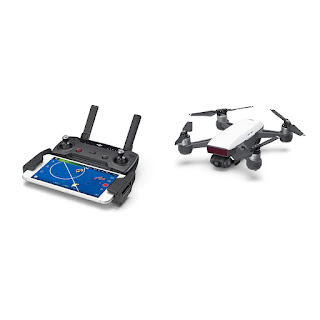After my experience with controlling and flying the DJI Spark, I have come up with two suggestions that could improve the design and manufacturing of the DJI Spark.
My first suggestion for improvement has to do with the battery life. With a max flight time of 16 minutes on a full battery, it is really hard to spend longer time flying the drone and time consuming when you need to keep charging the drone up. The only benefit of the short battery time is to aid of the instant landing feature when the battery gets too low. The DJI Spark battery life may also seem short when compared to other drones.
The next change was harder to come up with, as most of the DJI Spark's features were a positive experience. But another slight change that I would make would be to the drones wings and arms. Although the DJI Spark is already compact and light in weight, I feel that the drone could be even further compact so that the drones wings and arms could be folded further.
There was no real problems faced when flying the DJI Spark and my experience with the Spark was positive, so the number of changes and improvements I would make is low.




















